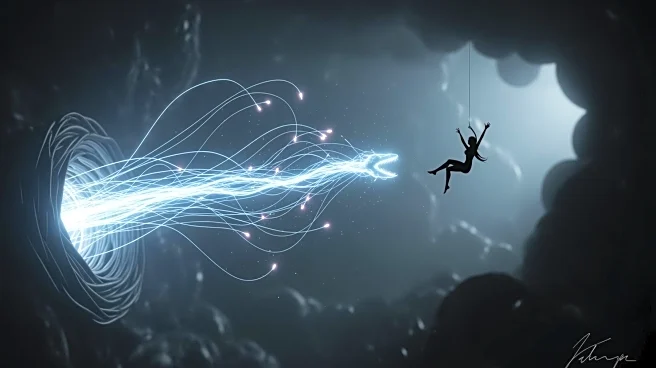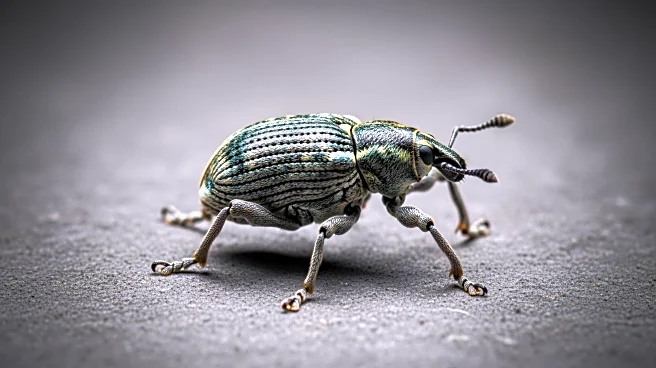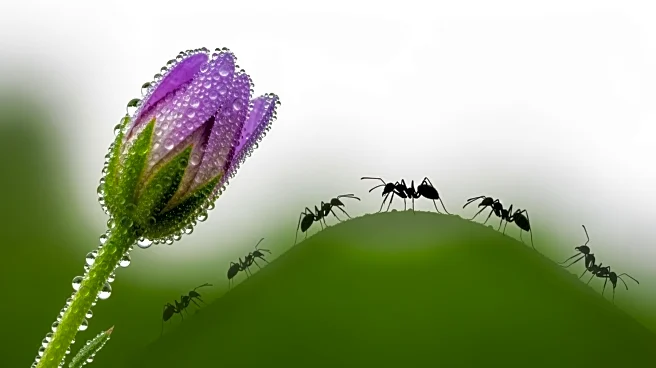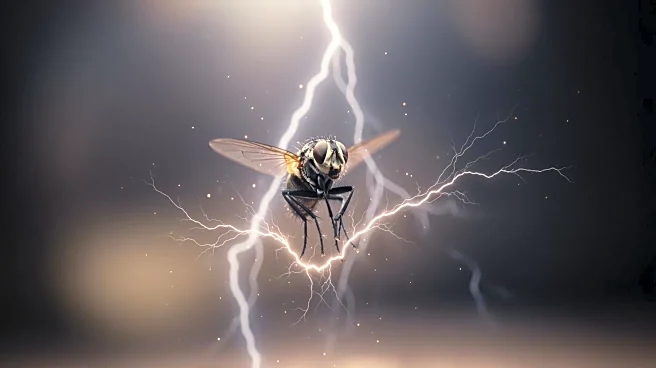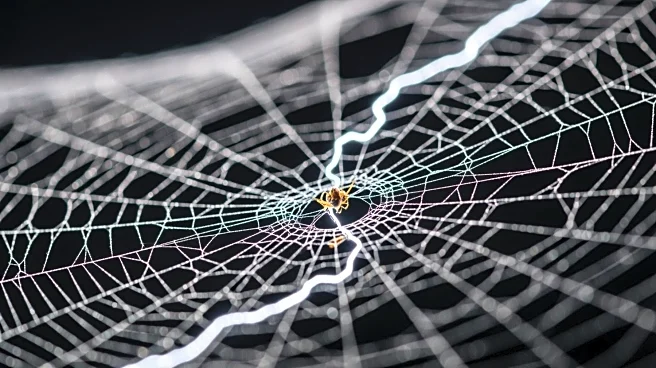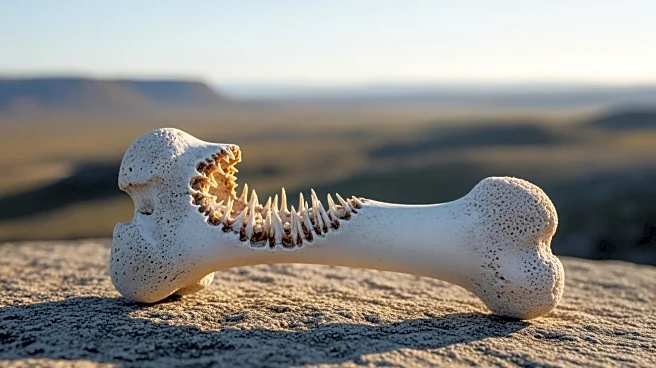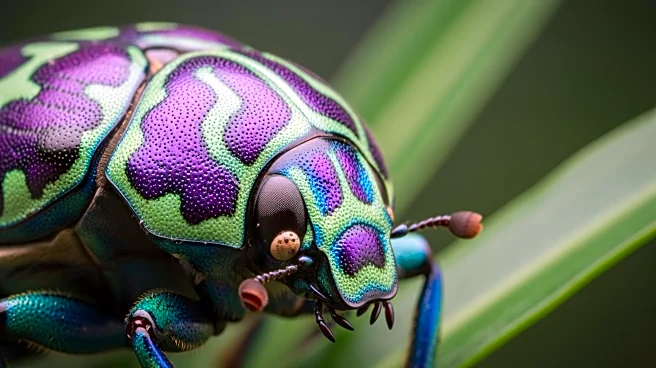What's Happening?
Researchers have discovered that the parasitic roundworm S. carpocapsae uses static electricity to jump onto aerial prey. The worm curls into a loop and leaps as high as 25 times its body length, using electrostatic forces to increase its chances of landing
on prey. This unique adaptation allows the worm to ambush insects midair, showcasing the intersection of biology and physics.
Why It's Important?
The study highlights the innovative survival strategies of microscopic organisms, emphasizing the role of physics in biological processes. Understanding these mechanisms can inform research on parasitic behavior and contribute to the development of pest control methods. The findings also underscore the importance of interdisciplinary research in uncovering novel biological adaptations.
What's Next?
Further research may explore the potential applications of this discovery in pest management and ecological studies. Scientists may investigate other organisms that utilize electrostatic forces for survival, expanding the understanding of physics in biology. The study may also prompt collaborations between biologists and physicists to explore similar phenomena.
Beyond the Headlines
The study raises ethical questions about the use of parasitic organisms in research and their impact on ecosystems. It highlights the complexity of biological interactions and the importance of preserving biodiversity. The findings may influence cultural perceptions of parasitism and the role of microscopic organisms in ecological balance.
